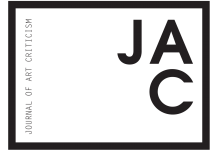When the JAC editorial board voted to adopt “New Media, New Messages” as the theme for this year’s print journal, we had no way of knowing just how prescient our subject would turn out to be. This journal was meant to be released in print in April of 2020. Instead, in March, the campus that our editorial board calls home was shuttered due to concerns over a viral pandemic. The semester’s early termination has brought numerous unforeseen challenges: we have been forced to add COVID-19 to the “Words” section of our Style Guide. We have undertaken the bulk of the production process remotely, coordinating via online platforms and screen-mediated video calls. While the Journal has always had a web presence, we have never relied quite so heavily on the digital sphere and all the opportunities it entails—in short, on new media—to facilitate its production. While this historical turn may not be directly reflected in the content of this year’s journal, it indisputably recontextualizes all that we have come to understand when we talk about “new media.”
The authors that we have included in this year’s journal approach the question of new media in disparate ways. They interrogate the politics and poetics of a wide variety of creative practices—from dollmaking to DJ’ing—that relate variously to the contemporary digital space. Eddie Baker looks towards the history of puppetry for insight into the ontological condition of almost-human avatars; Amanda Ba, working in a similar vein, examines the uncanny quality of human facsimiles across video art. Nolan Kelly updates Walter Benjamin’s theory of “The Author as Producer” to position the DJ as a paradigmatic figure of digital culture, exploring the selective mode as the substrate for computational innovations like artificial intelligence.
Sophie Loring upends the Heidiggarian distinction between nature and man-made machines in her essay on Mel Chin’s Revival Field, arguing that technological interventions can themselves be inherently poetic. Altogether, this suite of essays offers an understanding of new media that expands beyond the default assumptions of the category, re-staging its relationship to other forms of artistic creation and consumption past, present, and future.
This edition also features original work by artists from around the world: Marisa Murillo, Julie Lee, Lizzy Deacon, and Morgan Tabb have contributed visual media that draw on a range of production processes and platforms, from digital video to code-based net art. All of this year’s artworks are also accessible at http://www.journalofartcriticism.com, including links to view Julie Lee and Morgan Tabb’s time-based works in full.
As you read through this year’s journal online, we encourage you to meditate on the different affordances of print versus digital publishing. How does each form limit or expand the potential avenues by which one can engage with a piece of art or writing? We at JAC stand by the continued relevance of the printed word, and hope that by the time you’re reading this, the COVID-19 crisis will have abated and the journal will have been released in print, in line with our original intentions. Whether you’re holding a physical copy of JAC in your hands or reading it on your screen, we hope that this year’s journal will provoke a moment of meaningful reflection regarding the relationship between print and digital publishing within the broader landscape of new media.
This journal is only possible thanks to the grace and generosity of our community. The editorial board would like to thank Joan Snitzer, Elisabeth Sher, Ada Potter, Mira Dayal, Josephine Heston, Julia Wolkoff, Leslie Hewitt, and the Barnard Art History Department.
Contents:
Big Data Black Hole
Marisa Murillo
I Miss You
Julie Lee
Almost Human: Recent Interest in Puppetry and Doll-Making
Eddie Baker
iiiSystem
Lizzy Deacon
Our Uncanny Digital Existence
Amanda Ba
“Disconnect” from Input/Output
Marisa Murillo
Humanizing the Machine: Selection and Synthesis in New Media
Nolan Kelly
In the absence of everything there is solace
Morgan Tabb
You are Here
Marisa Murillo
The Question Concerning Hyperaccumulation, or Mel Chin’s Revival Field
Sophie Loring
